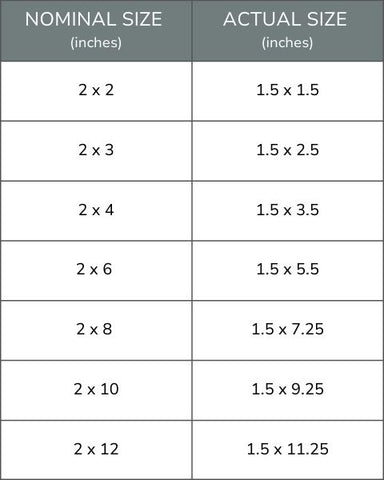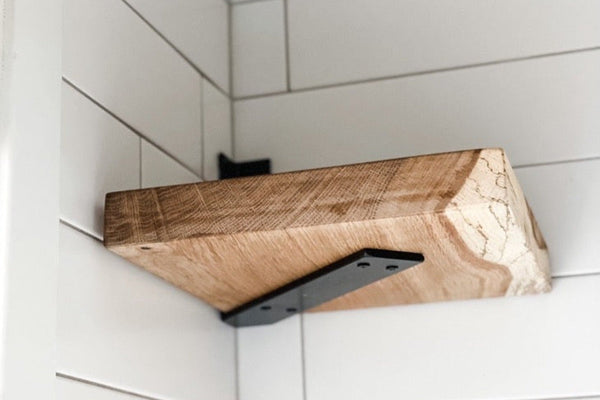Using dimensional lumber from the hardware store is a simple and affordable way to create DIY wood shelves. Available in various wood species and easy to find, these boards can often be cut to your desired length at the store. This makes it possible to build shelves without any power tools!
However, there’s a lot of confusion about lumber sizing, which can be frustrating when selecting materials for your project. To help, we’ve put together this guide and lumber size chart to clear things up.
We'd like to clear that up for you with our lumber size chart.
Nominal Size vs. Actual Size
When browsing lumber at the hardware store, you’ll notice sizes labeled as 2" x 4" or 1" x 6. However, these measurements don’t match the board’s actual dimensions.
Here’s why:
- Nominal Size - This refers to the rough-sawn dimensions of the board before it's been planed smooth at the mill.
- Actual Size - This is the final, true measurement after the board has been processed and smoothed.
For example, a 2" x 4" board actually measures about 1.5" x 3.5", and a 1" x 6" board is closer to 0.75" x 5.5". This distinction is important when planning your shelving project and choosing the correct metal shelf brackets for proper support.
Lumber Dimension Guide

Download Lumber Size Chart
Now that you know how dimensional lumber sizing works, it's important to choose shelf brackets that fit your boards correctly. Check out our How to Choose Shelf Brackets guide for step-by-step instructions on selecting the perfect brackets for your shelves.
At Cascade Iron Co., we specialize in handcrafted metal shelf brackets made from high-quality US steel - perfect for supporting DIY wood shelves of all sizes. Browse our collection and start your next project today!



